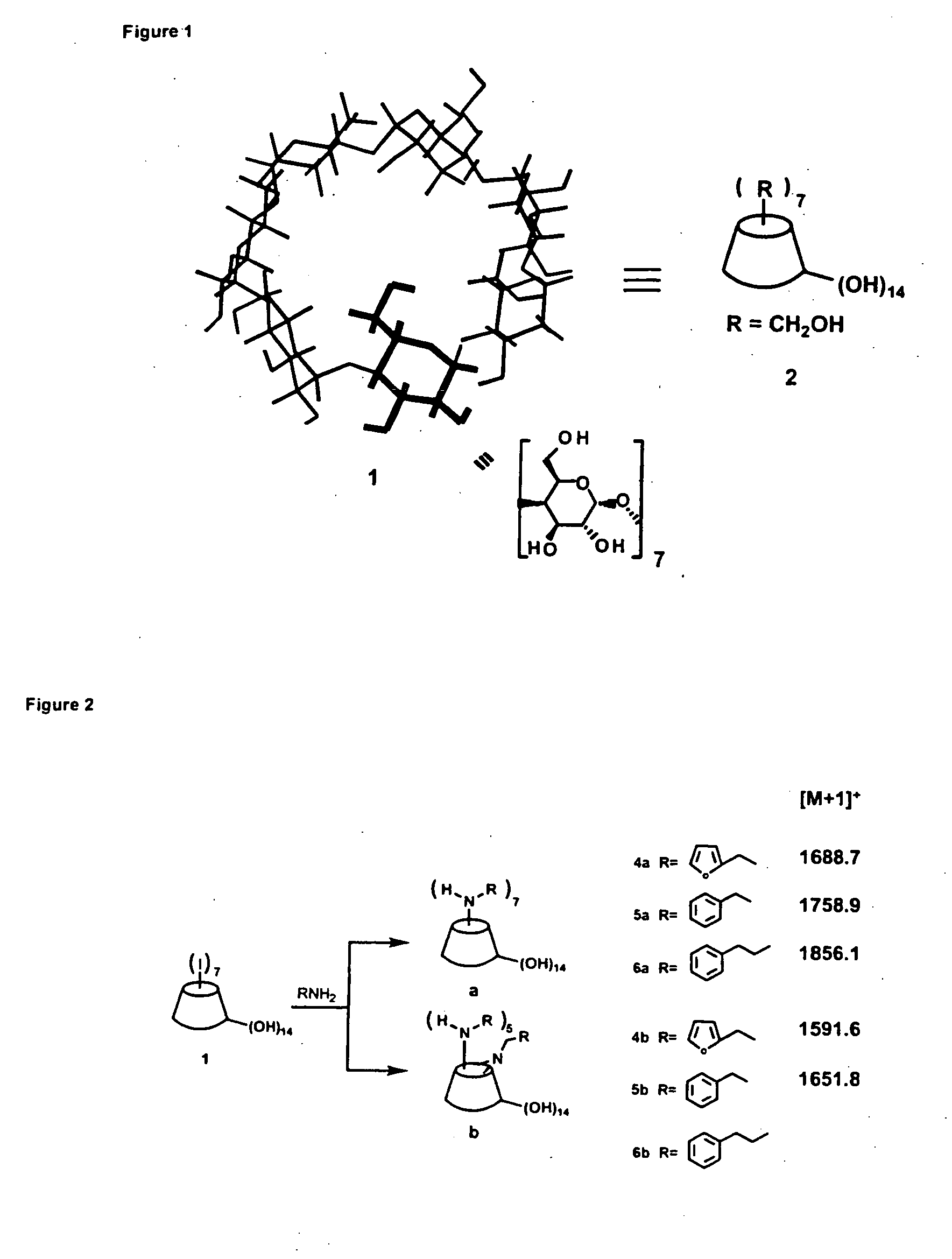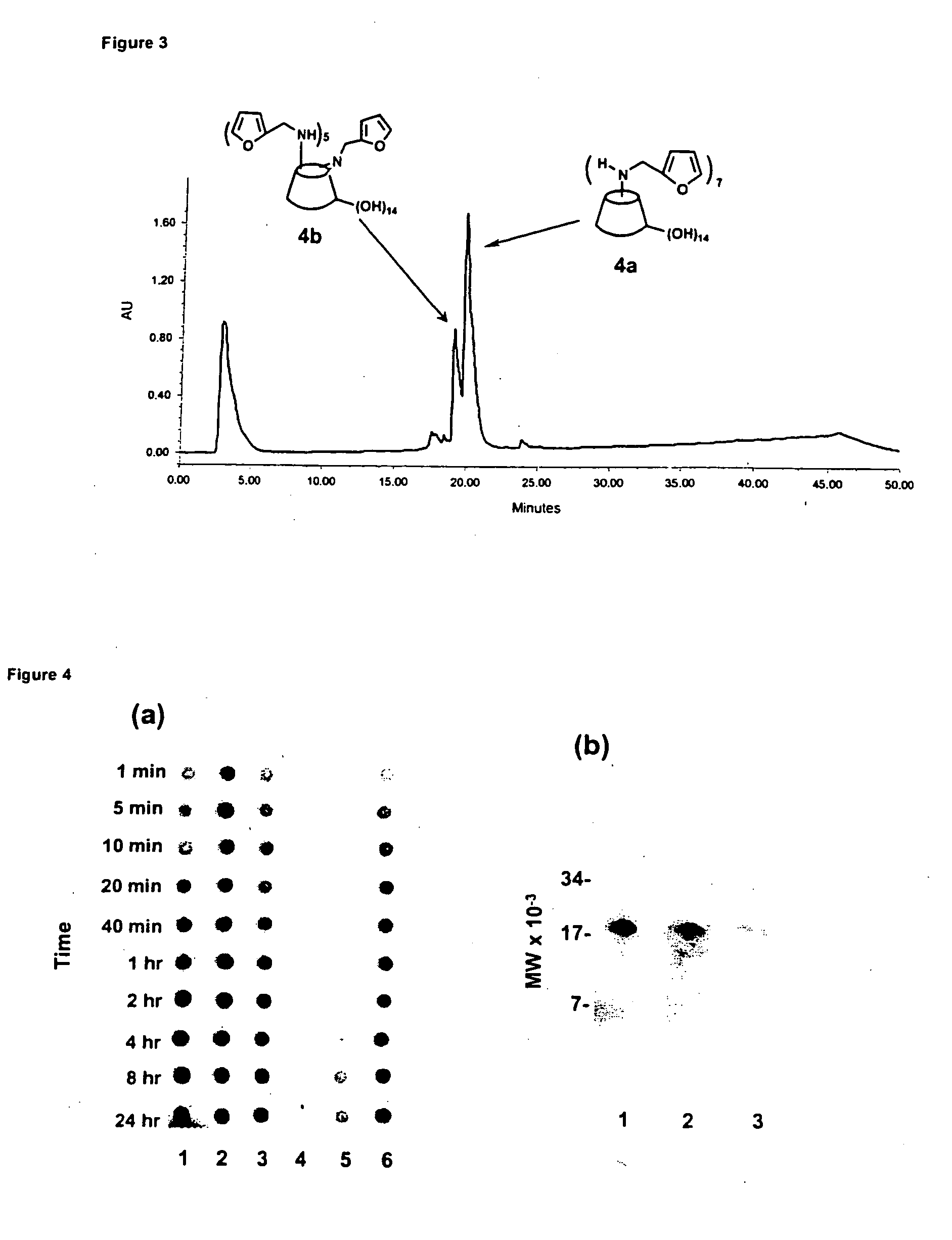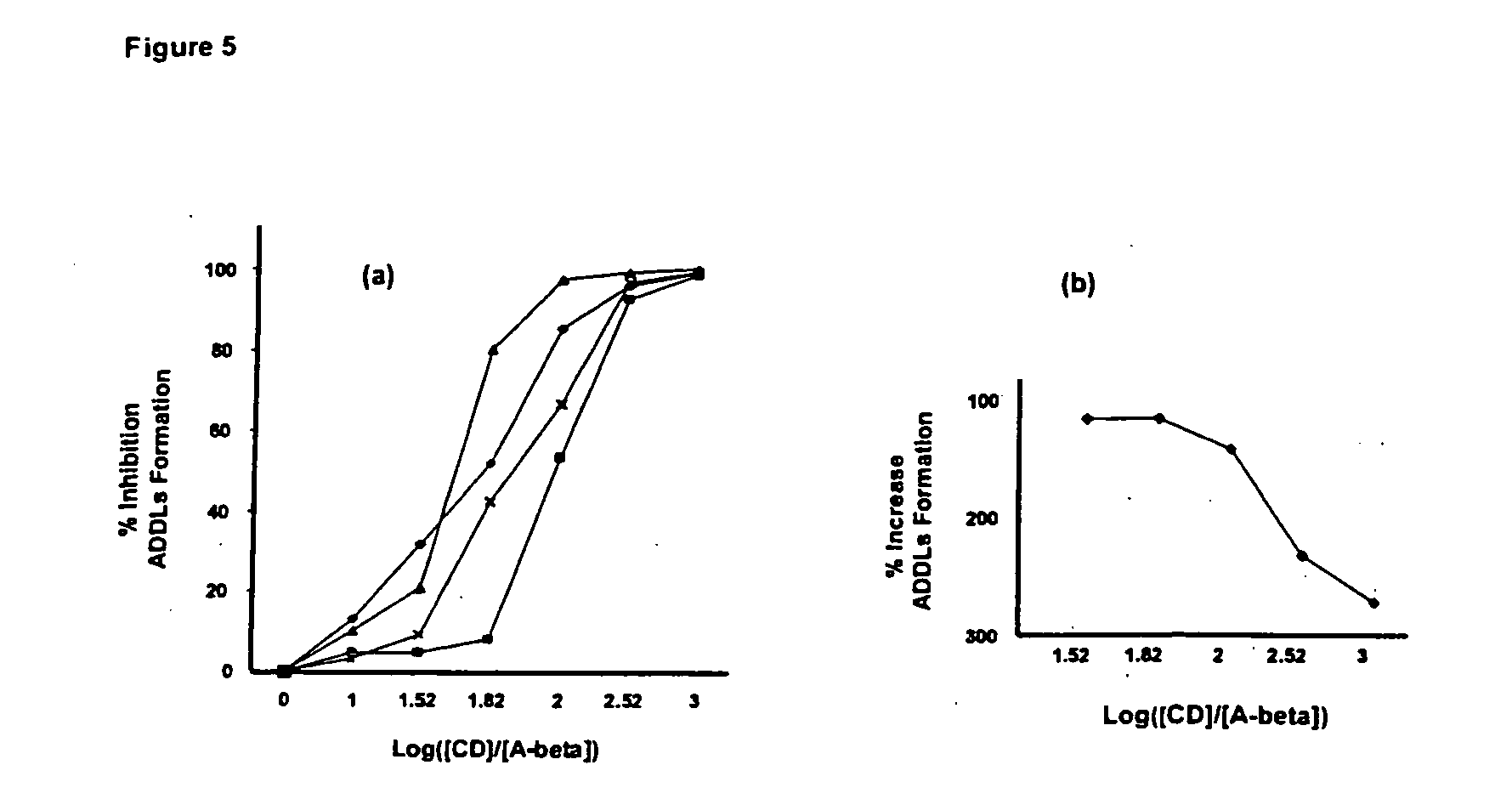Per-6-substituted-per-6-deoxy-cyclodextrins, and use of the same to inhibit soluble beta-amyloid-peptide derived oligomers and to treat alzheimer's and related diseases
- Summary
- Abstract
- Description
- Claims
- Application Information
AI Technical Summary
Benefits of technology
Problems solved by technology
Method used
Image
Examples
Embodiment Construction
Recent studies have shown that the most important role of Aβ in the etiology of AD may not be plaque formation, but in the formation of soluble, metastable Aβ1-42 neurotoxic oligomers (i.e., ADDLs). Inhibiting the assembly or activity of ADDLs therefore represents an attractive target for the treatment of AD and related diseases and conditions. The present invention discloses the preparation, isolation, and evaluation of per-6-substituted-CDs that inhibit ADDL formation, and, accordingly ADDL activity.
The per-6-substituted-CDs of the present invention have a structure schematically illustrated below as (2a) and (2b), and are prepared by reacting the per-iodo-beta-CD (1) with a primary or a secondary amine.
wherein n is 6 or 7 (2b)
The structure
is an abbreviated structure for a cyclodextrin (CD) framework. The full structure of a beta-CD is shown, for example, in. U.S. Pat. No. 5,834,446, incorporated herein by reference.
In accordance with the present invention, the R grou...
PUM
| Property | Measurement | Unit |
|---|---|---|
| Structure | aaaaa | aaaaa |
| Therapeutic | aaaaa | aaaaa |
Abstract
Description
Claims
Application Information
 Login to View More
Login to View More - R&D
- Intellectual Property
- Life Sciences
- Materials
- Tech Scout
- Unparalleled Data Quality
- Higher Quality Content
- 60% Fewer Hallucinations
Browse by: Latest US Patents, China's latest patents, Technical Efficacy Thesaurus, Application Domain, Technology Topic, Popular Technical Reports.
© 2025 PatSnap. All rights reserved.Legal|Privacy policy|Modern Slavery Act Transparency Statement|Sitemap|About US| Contact US: help@patsnap.com



